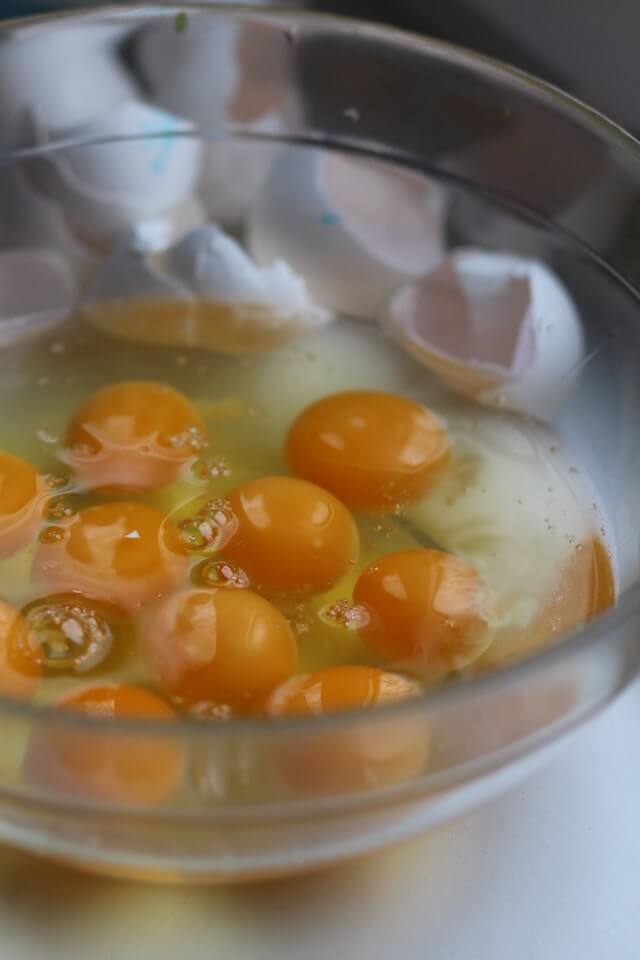Eggs are a common ingredient in baking, but for those who follow a vegan diet or have an egg allergy, finding suitable egg substitutes can be a challenge. Luckily, there are several egg substitutes that can be used in baking to achieve the same results as using eggs. In this article, we’ll explore the different types of egg substitutes for baking and how to use them effectively.
III. How to Use Egg Substitutes A. Understanding the role of eggs in baking B. How to measure and substitute eggs in recipes C. Adjusting baking time and temperature when using egg substitutes
Eggs are a staple ingredient in baking, used for their binding, leavening, and emulsifying properties. However, for those who follow a vegan diet or have an egg allergy, eggs can be a challenge to work with. That’s where egg substitutes come in. By using egg substitutes, home cooks can achieve the same results as using eggs in baking. In this article, we’ll explore the different types of egg substitutes for baking and how to use them effectively.
II. Types of Egg Substitutes
A. Commercial Egg Replacers
Commercial egg replacers are a popular choice for vegans and those with egg allergies. They are made from a blend of plant-based ingredients and can be used as a direct substitute for eggs in recipes. Commercial egg replacers come in powder or liquid form and can be found in health food stores or online. Some of the advantages of using commercial egg replacers include consistency in baking results, ease of use, and longer shelf life. However, they can be more expensive than other egg substitutes and may contain artificial ingredients.
B. Applesauce
Applesauce is a popular egg substitute in baking. It works well in recipes that call for one or two eggs and adds moisture to the recipe. To use applesauce as an egg substitute, replace each egg with 1/4 cup of unsweetened applesauce. Keep in mind that using applesauce may result in a slightly denser and moister final product. Some of the advantages of using applesauce as an egg substitute include its natural sweetness, availability, and lower cost compared to commercial egg replacers. However, it may alter the flavor of the final product and is not suitable for recipes that require a fluffy or light texture.
C. Silken Tofu
Silken tofu is another popular egg substitute in baking. It works well in recipes that call for multiple eggs and adds a creamy texture to the recipe. To use silken tofu as an egg substitute
II. Types of Egg Substitutes (cont’d)
C. Silken Tofu (cont’d)
To use silken tofu as an egg substitute, blend 1/4 cup of silken tofu in a food processor until it’s smooth and creamy. Use this mixture to replace each egg in the recipe. Silken tofu works best in recipes that require a dense texture, such as brownies or cheesecake. Some of the advantages of using silken tofu as an egg substitute include its high protein content, creamy texture, and neutral flavor. However, it may alter the color of the final product and may not be suitable for recipes that require a fluffy or light texture.
D. Bananas
Bananas are a great egg substitute in recipes that call for a fluffy texture, such as pancakes or muffins. They add natural sweetness and moisture to the recipe. To use bananas as an egg substitute, mash a ripe banana and use it to replace each egg in the recipe. Keep in mind that using bananas may alter the flavor of the final product and may result in a denser texture. Some of the advantages of using bananas as an egg substitute include their natural sweetness, availability, and cost-effectiveness.
III. How to Use Egg Substitutes
Understanding the role of eggs in baking is essential when using egg substitutes. Eggs provide several functions in baking, including binding, leavening, and emulsifying. When using egg substitutes, it’s important to choose the right substitute based on the recipe and the function that eggs provide.
To measure and substitute eggs in recipes, it’s essential to follow the conversion chart for each substitute. For example, one egg can be substituted with 1/4 cup of applesauce or 1/4 cup of silken tofu. However, keep in mind that different substitutes may have different effects on the final product, so it’s important to adjust the baking time and temperature accordingly.
When using egg substitutes, it’s also important to pay attention to the recipe instructions. Some recipes may require specific ingredients or techniques that may not work well with certain egg substitutes. For example, recipes that require a lot of leavening may not work well with egg substitutes that don’t provide leavening properties.
In conclusion, finding suitable egg substitutes for baking is essential for those who follow a vegan diet or have an egg allergy. Commercial egg replacers, applesauce, silken tofu, and bananas are some of the popular egg substitutes for baking. Each substitute has its advantages and disadvantages and should be chosen based on the recipe and the function that eggs provide. Understanding the role of eggs in baking and following the conversion chart and recipe instructions are essential when using egg substitutes. With these tips in mind, home cooks can enjoy baking without eggs and still achieve delicious results.
